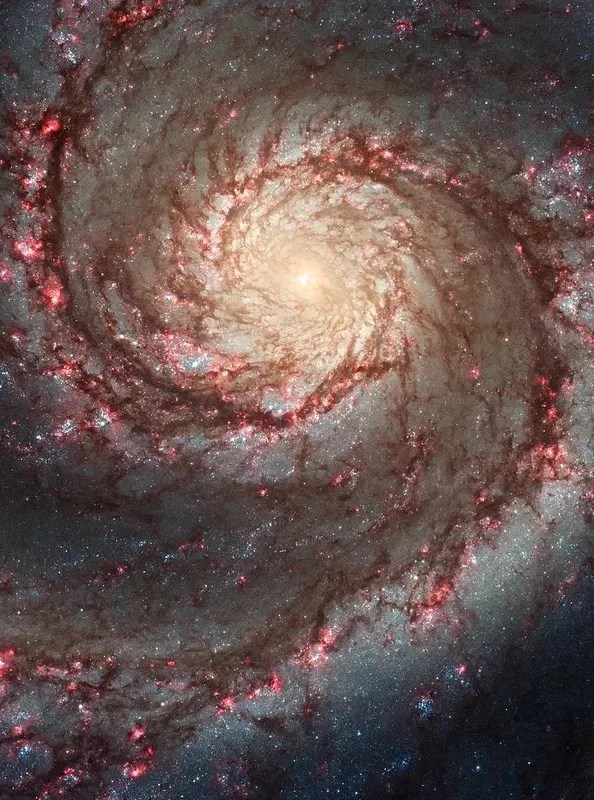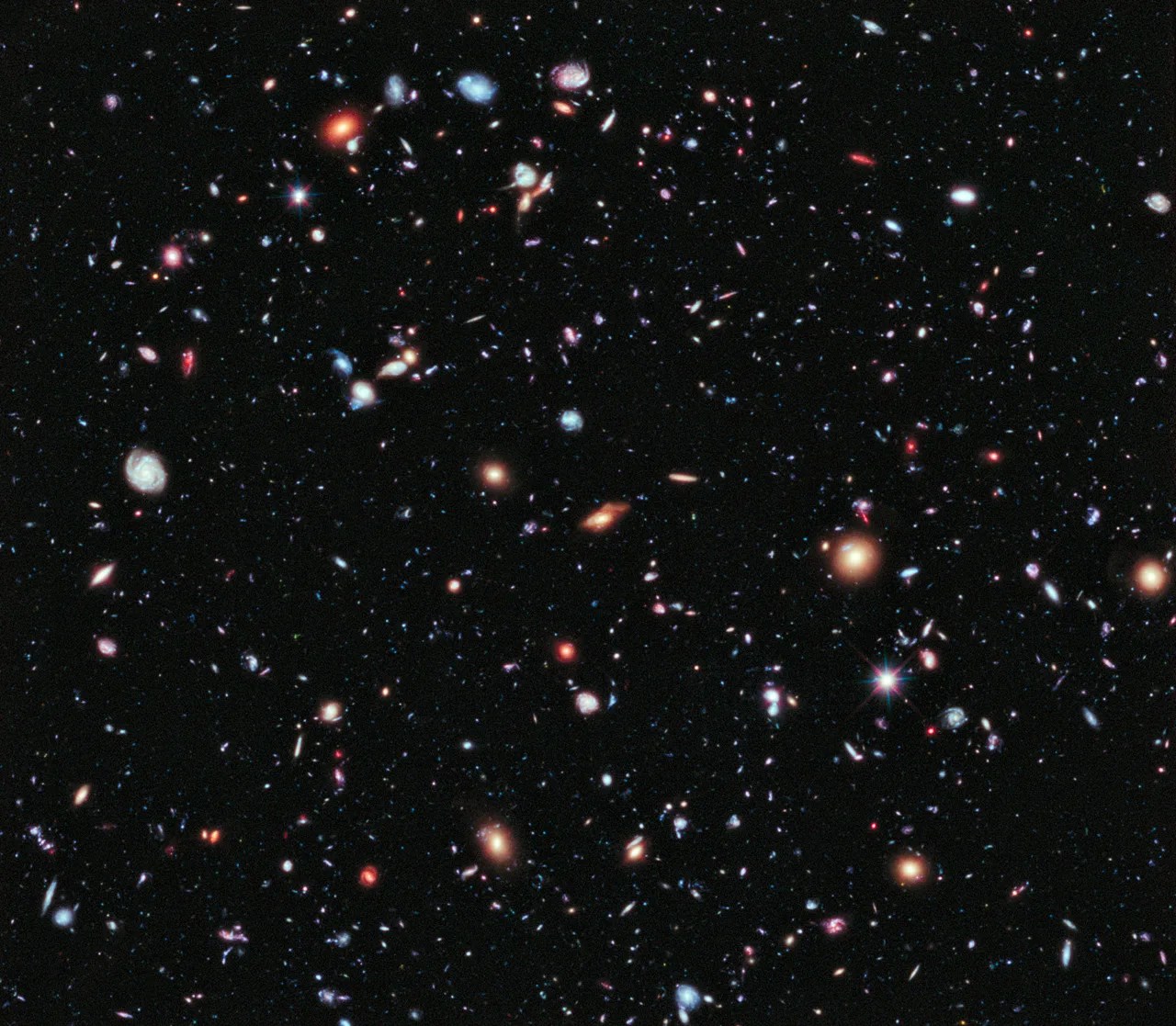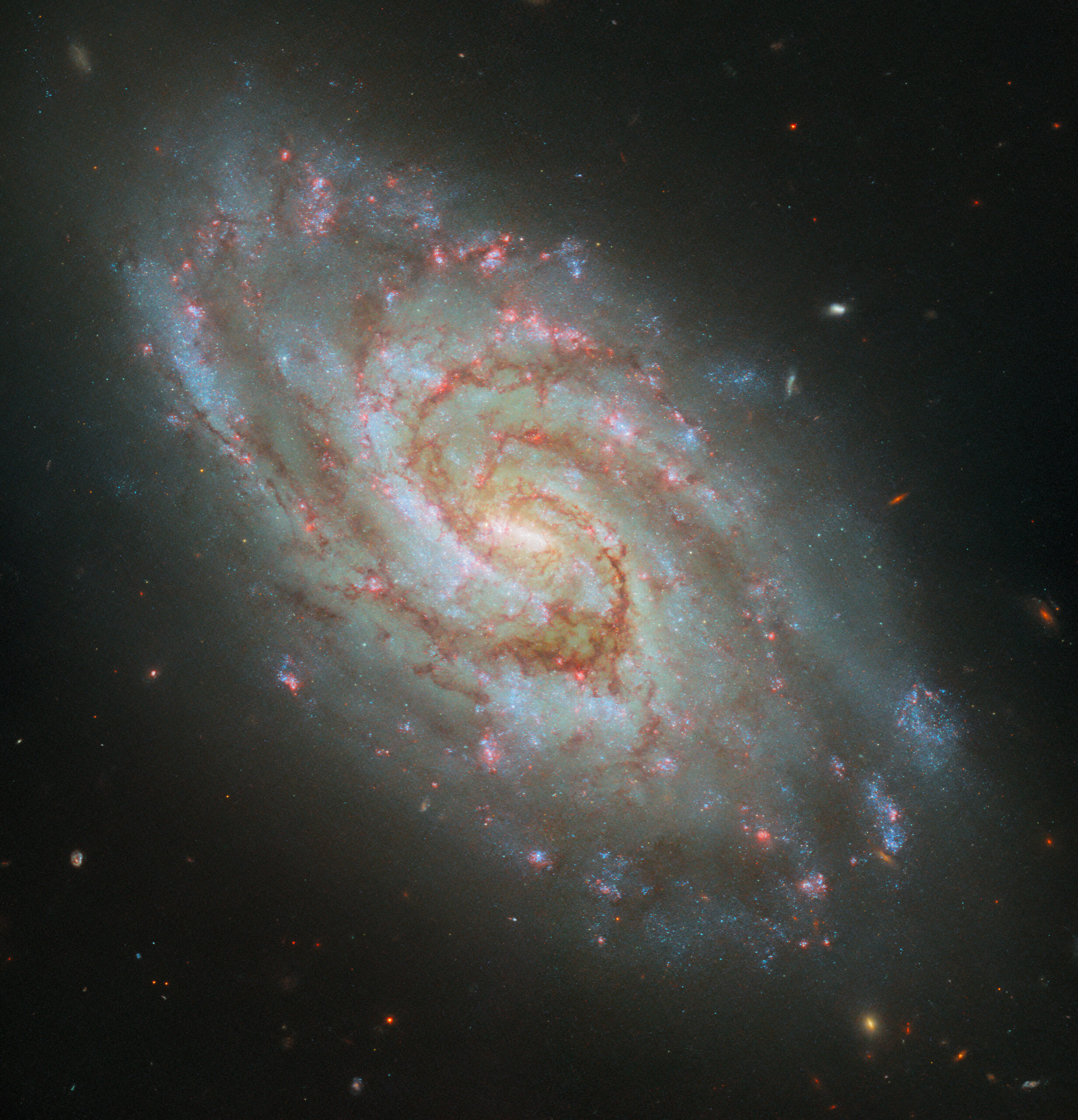Hubble Space Telescope Home Hubble Captures Stellar… Hubble Space Telescope Hubble Home Overview About Hubble The History of Hubble Hubble Timeline Why Have a Telescope in Space? Hubble by the Numbers At the Museum FAQs Impact & Benefits Hubble’s Impact & Benefits Science Impacts Cultural Impact Technology Benefits Impact on Human Spaceflight Astro Community Impacts Science Hubble Science Science Themes Science Highlights Science Behind Discoveries Hubble’s Partners in Science Universe Uncovered Explore the Night Sky Observatory Hubble Observatory Hubble Design Mission Operations Missions to Hubble Hubble vs Webb Team Hubble Team Career Aspirations Hubble Astronauts News Hubble News Hubble News Archive Social Media Media Resources Multimedia Multimedia Images Videos Sonifications Podcasts E-books Lithographs Fact Sheets Glossary Posters Hubble on the NASA App More Online Activities 2 min read
Hubble Captures Stellar Nurseries in a Majestic Spiral  This NASA/ESA Hubble Space Telescope image features the spiral galaxy IC 1954. ESA/Hubble & NASA, D. Thilker, J. Lee and the PHANGS-HST Team This image from the NASA/ESA Hubble Space Telescope features the spiral galaxy IC 1954, located 45 million light-years from Earth in the constellation Horologium. It sports a glowing bar in its core, majestically winding spiral arms, and clouds of dark dust across it. Numerous glowing, pink spots across the disc of the galaxy are H-alpha regions that offer astronomers a view of star-forming nebulae, which are prominent emitters of red, H-alpha light. Some astronomers theorize that the galaxy’s ‘bar’ is actually an energetic star-forming region that just happens to lie over the galactic center.
This NASA/ESA Hubble Space Telescope image features the spiral galaxy IC 1954. ESA/Hubble & NASA, D. Thilker, J. Lee and the PHANGS-HST Team This image from the NASA/ESA Hubble Space Telescope features the spiral galaxy IC 1954, located 45 million light-years from Earth in the constellation Horologium. It sports a glowing bar in its core, majestically winding spiral arms, and clouds of dark dust across it. Numerous glowing, pink spots across the disc of the galaxy are H-alpha regions that offer astronomers a view of star-forming nebulae, which are prominent emitters of red, H-alpha light. Some astronomers theorize that the galaxy’s ‘bar’ is actually an energetic star-forming region that just happens to lie over the galactic center.
The data featured in this image come from a program that extends the cooperation among multiple observatories: Hubble, the infrared James Webb Space Telescope, and the Atacama Large Millimeter/submillimeter Array, a ground-based radio telescope. By surveying IC 1954 and over 50 other nearby galaxies in radio, infrared, optical, and ultraviolet light, astronomers aim to fully trace and reconstruct the path matter takes through stars, mapping the interstellar gas and dust in each galaxy. Hubble’s observing capabilities form an important part of this survey: it can capture younger stars and star clusters when they are brightest at ultraviolet and optical wavelengths, and its H-alpha filter effectively tracks emission from nebulae. The resulting dataset will form a treasure trove of research on the evolution of stars in galaxies, which Webb can build upon as it continues its science operations into the future.
Facebook logo @NASAHubble @NASAHubble Instagram logo @NASAHubble Media Contact:
Claire Andreoli
NASA’s Goddard Space Flight Center, Greenbelt, MD
claire.andreoli@nasa.gov
Details Last Updated Sep 27, 2024 Editor Andrea Gianopoulos Location NASA Goddard Space Flight Center Related Terms Astrophysics Astrophysics Division Galaxies Hubble Space Telescope Spiral Galaxies Stars
Keep Exploring Discover More Topics From Hubble Hubble Space Telescope
Since its 1990 launch, the Hubble Space Telescope has changed our fundamental understanding of the universe.


Science Behind the Discoveries




